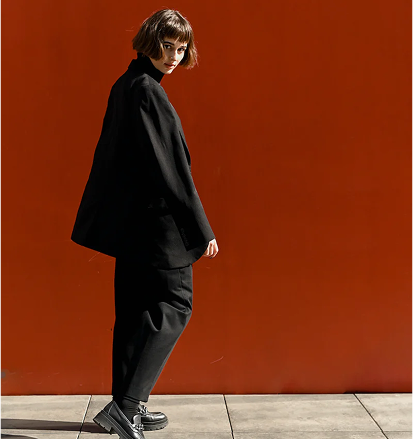Your jeans are soaked from the rain, your cotton shirt clings to your back, and your feet scream with every step. Meanwhile, other hikers breeze past you, looking comfortable and confident.
The difference? They know what to wear.
Hiking clothes do three jobs: keep you comfortable in changing weather, protect you from the elements, and move with your body on tough terrain.
Get it right and you’ll finish strong with great photos. Get it wrong and you’ll remember the misery more than the views.
What to Wear Hiking
Think of your hiking outfit as a system that adapts to your body and the weather. A sweat-wicking base layer pulls moisture off your skin so you don’t get chilled when you stop moving.
Your mid layer traps warm air during breaks without overheating you on climbs. An insulated jacket handles sudden temperature drops or windy ridges.
Accessories like rain shells, hats, and gloves fill the gaps: protecting you from sun, rain, wind, and cold. Together, these pieces work like a temperature control system you can adjust throughout your hike.
Add stretchy, quick-dry pants and merino socks, and you’ve got everything your body needs to handle whatever the trail throws at you.
What NOT to Wear Hiking
Knowing what to skip is just as important as knowing what to pack.
- Cotton Next to Your Skin – Soaks up sweat and stays wet, making you cold and uncomfortable.
- Denim or Heavy Fashion Clothes – Heavy, stiff, slow to dry, and restricts movement.
- Fashion Sneakers or Open-Toe Shoes – Poor traction and no protection. You need real hiking shoes.
- Dangling Jewelry or Accessories – Can catch on branches. Keep it simple and secure.
Your Hiking Outfit Strategy
Here’s how to put together a hiking outfit that actually works on the trail. Start your hike feeling slightly cool. Remove layers before you sweat too much. Add them back when you stop.
Wear your socks and shoes around the house before a big hike to make sure everything feels right.
Stick to neutral colors (black, gray, navy, olive, tan) plus one bright accent. Everything matches, and you look great without trying.
Master these three strategies, and getting dressed for any hike becomes simple.
Must Have Hiking Gear and Top Picks
Now let’s get specific. Here are real products you can buy right now, organized by budget-friendly, mid-range, and premium options.
1. Sweat-Wicking Shirts
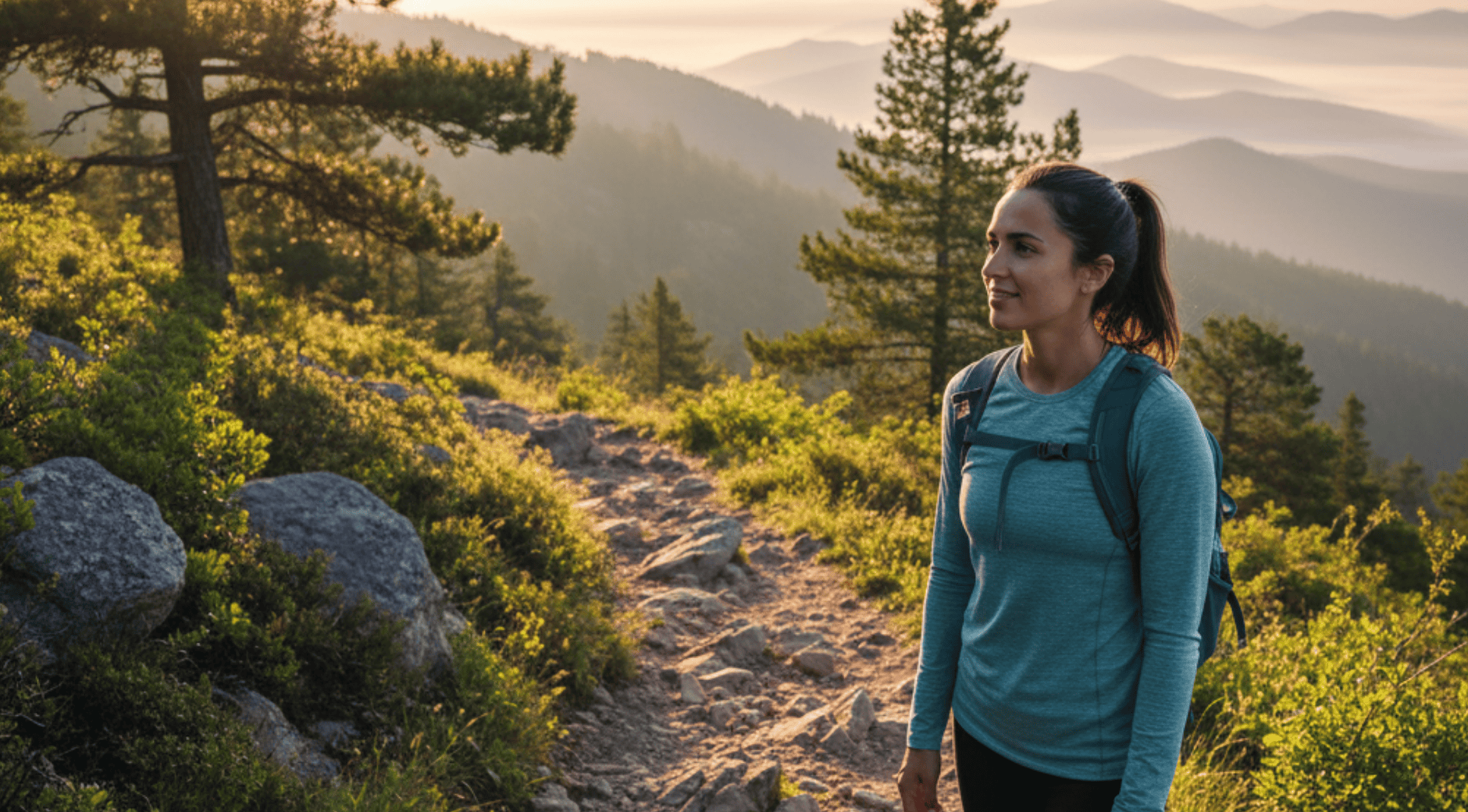
Your base layer manages sweat so you stay comfortable throughout your hike. Look for polyester for fast drying or merino wool for odor control and temperature regulation.
Best picks:
- Budget:Baleaf Women’s UPF Sun Hoodie
- Premium:Arc’teryx Women’s Taema Hoody
2. Rain Jackets

A quality rain shell keeps you dry without turning into a sauna. Features like pit zips and adjustable hoods make all the difference in varying conditions.
Best picks:
3. Insulated Jackets
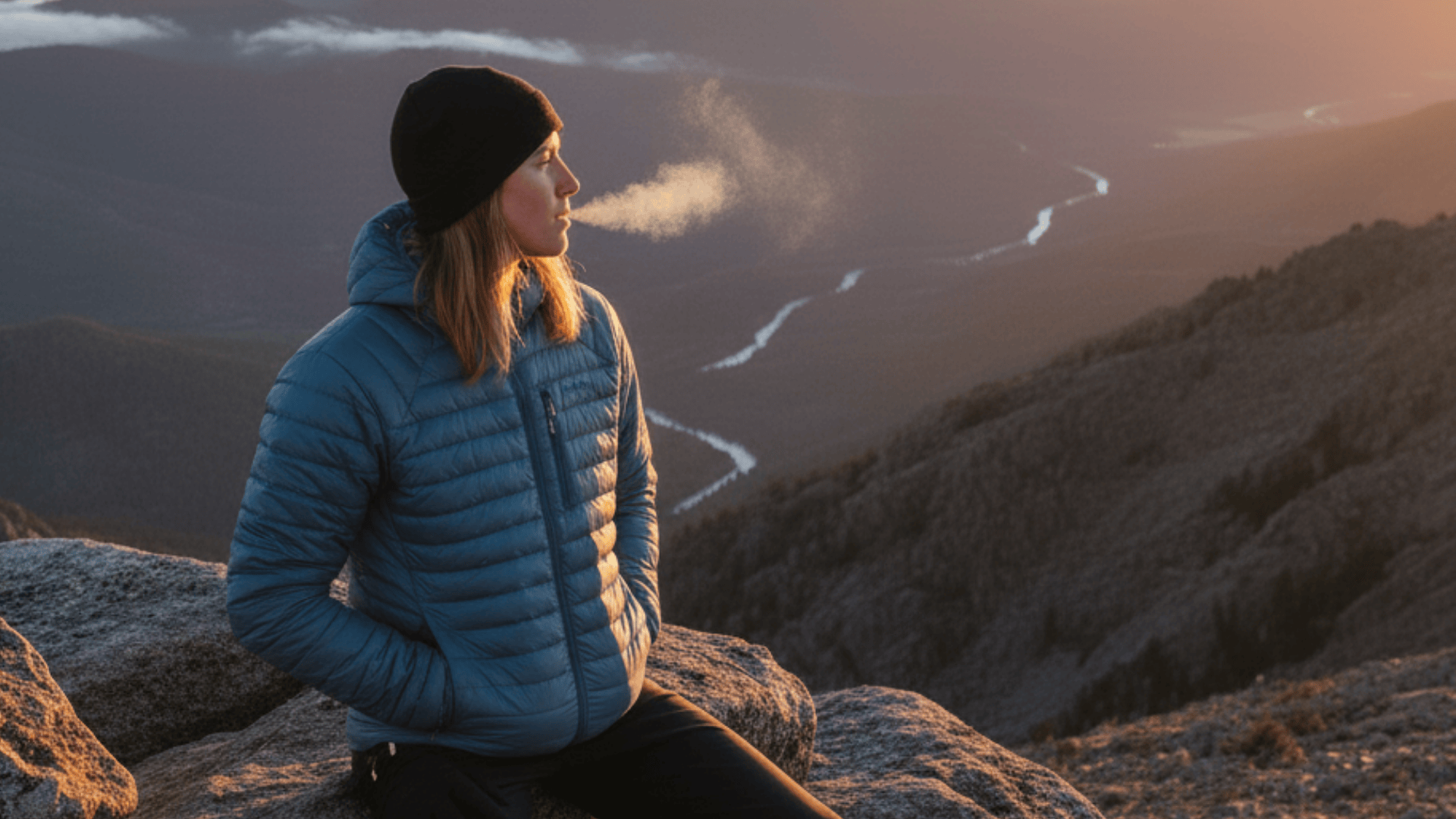
Your warmth insurance when temperatures drop or you take a break. Choose synthetic for wet climates or down for maximum warmth in dry, cold conditions.
Best picks:
- Budget:REI Co-op 650 Down Jacket
- Premium:Arc’teryx Atom Hoody
4. Base Layers (for cold weather)
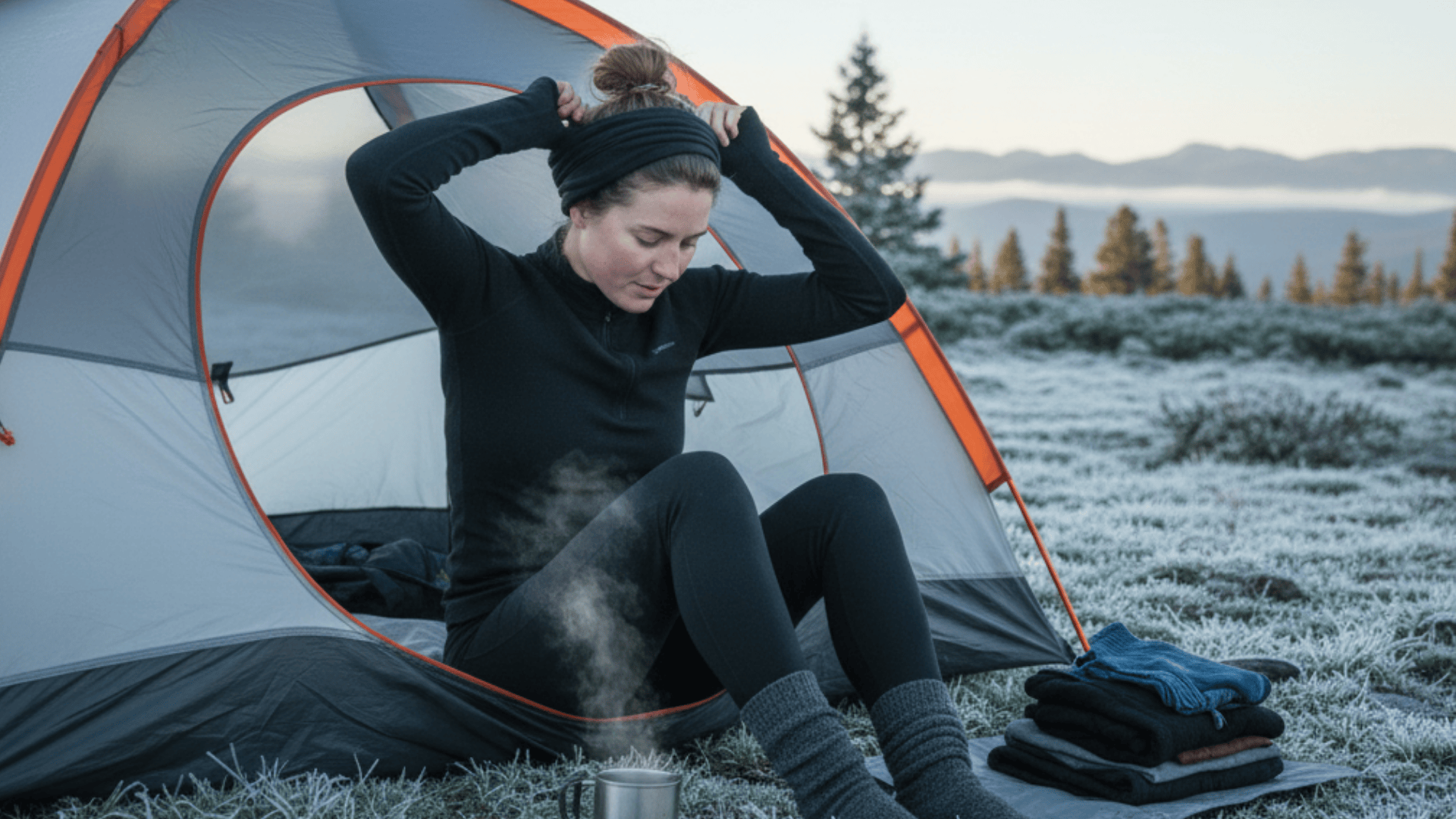
Thermal base layers keep you warm without overheating during cold-weather hikes. Merino wool regulates temperature naturally, while synthetic options dry faster and cost less.
Best picks:
- Budget: 32 Degrees Women’s Heat Tech Base Layer- Tee and leggings
- Premium:Icebreaker 200 Oasis Long Sleeve Crewe
5. Mid Layer Fleece or Sweater

A versatile mid-layer adds warmth between your base and outer shell. Grid fleece breathes better during activity, while traditional fleece maximizes warmth at rest.
Best picks:
- Budget:Columbia Women’s Glacial Fleece
- Premium:Patagonia R1 Air Zip-Neck
6. Sunglasses
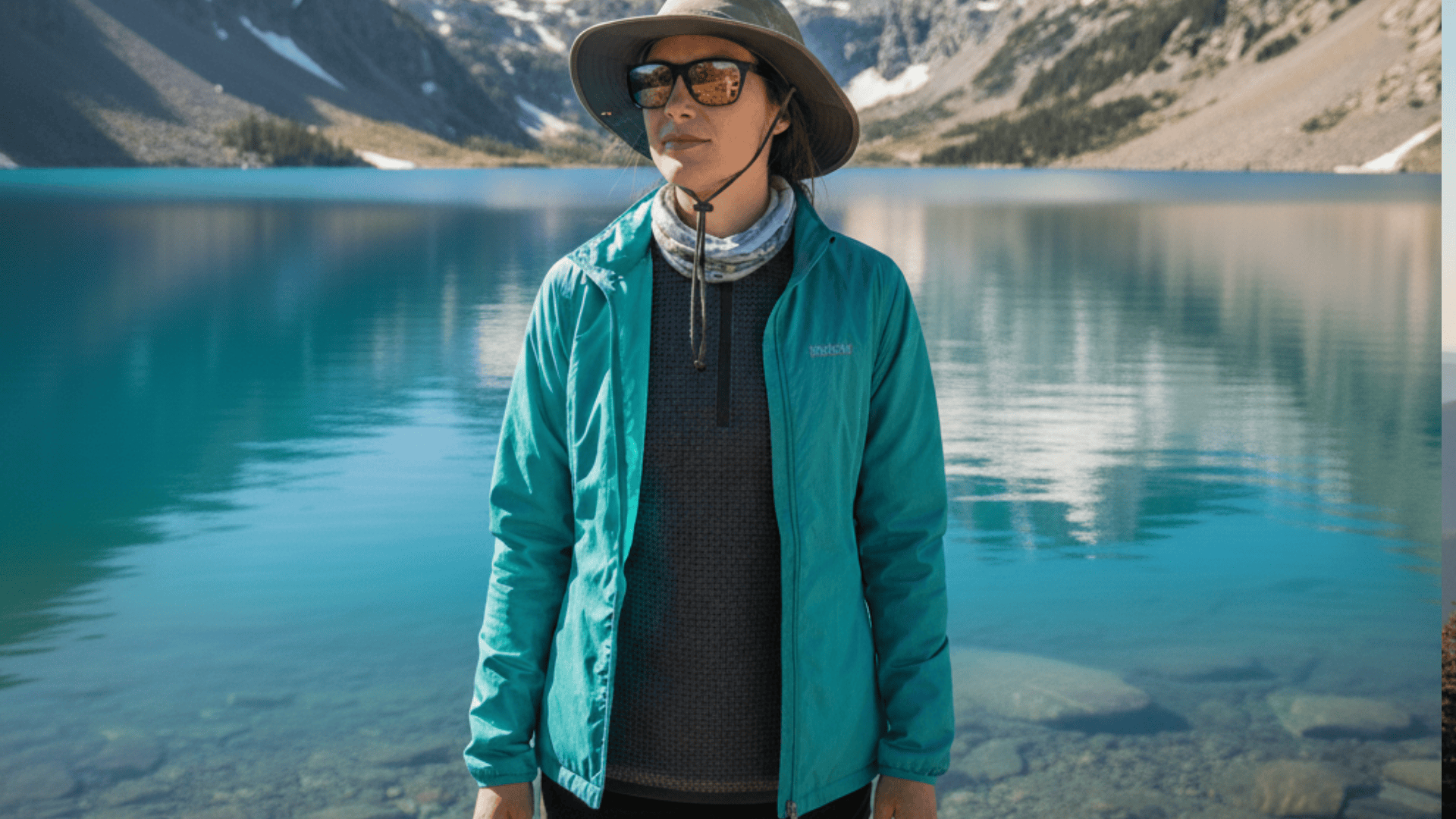
Protect your eyes from UV rays, glare, and flying trail debris. Polarized lenses reduce glare from water and snow while wrap-around styles block side light.
Best picks:
7. Cold Weather Leggings

Insulated leggings provide warmth that regular athletic tights can’t match. Fleece-lined options work for moderate cold, while heavyweight merino handles extreme temperatures.
Best picks:
- Budget:CRZ Yoga Fleece-Lined Leggings
- Premium:Fjällräven Abisko Trek Tights Pro
8. Hiking Pants and Summer Leggings
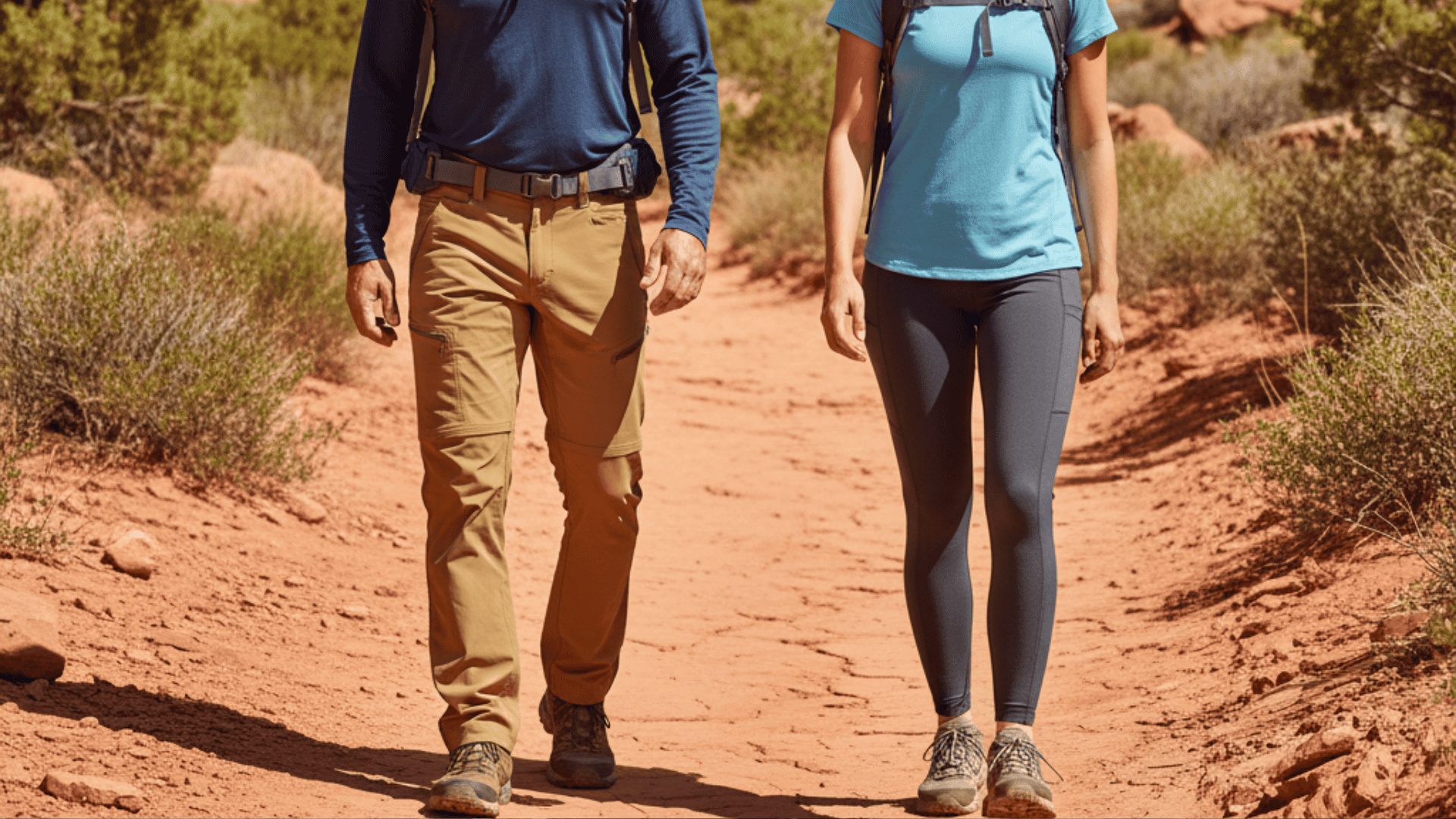
Your bottoms should stretch with you, dry quickly, and have secure pockets. Nylon pants offer durability and sun protection while leggings prioritize mobility and comfort.
Best picks:
- Budget:Columbia Saturday Trail II Pants
- Premium:Arc’teryx Gamma Women’s Pants
9. Hiking Shoes (Low-Top)
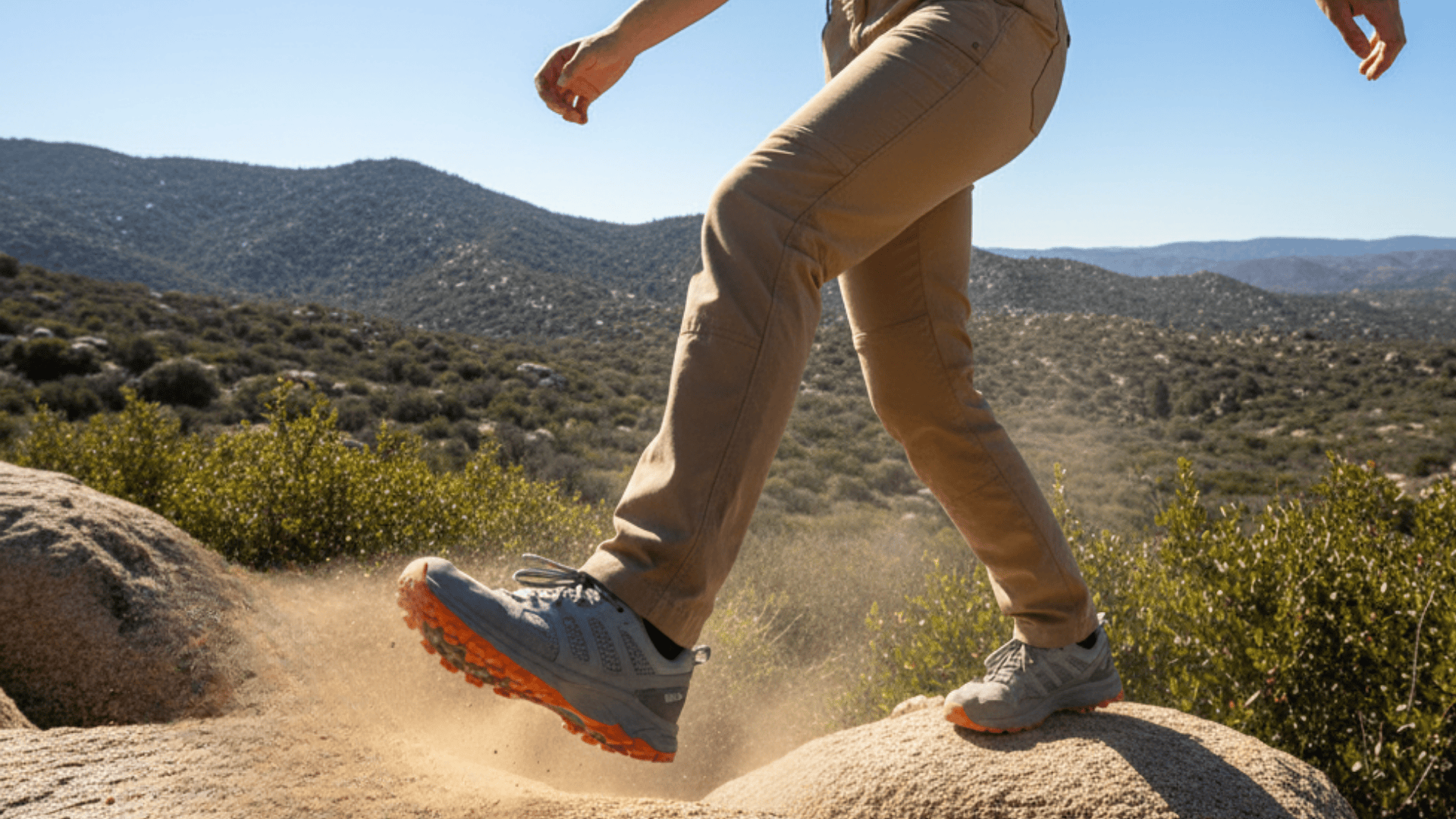
Low-cut shoes offer ankle mobility and work best on well-maintained trails. They’re lighter and more breathable than boots, making them ideal for warm weather and fast-paced hikes.
Best picks:
- Budget:Merrell Moab 3 Women’s
- Premium:Danner Trail 2650 Women’s
10. Hiking Boots (High-Top)

Boots deliver ankle support and protection for rough or unstable terrain. The higher cut prevents twisted ankles while keeping debris out on rocky or muddy trails.
Best picks:
- Budget:Keen Targhee III Waterproof Mid
- Premium:Lowa Renegade GTX Mid
11. Hats

A good hat shields you from the summer sun or retains heat in the winter cold. Wide brims protect your face and neck while beanies prevent significant heat loss through your head.
Best picks:
- Budget: REI Co-op Sahara Shade Cap
- Premium: Outdoor Research Sun Runner Cap
12. Sports Bras and Underwear
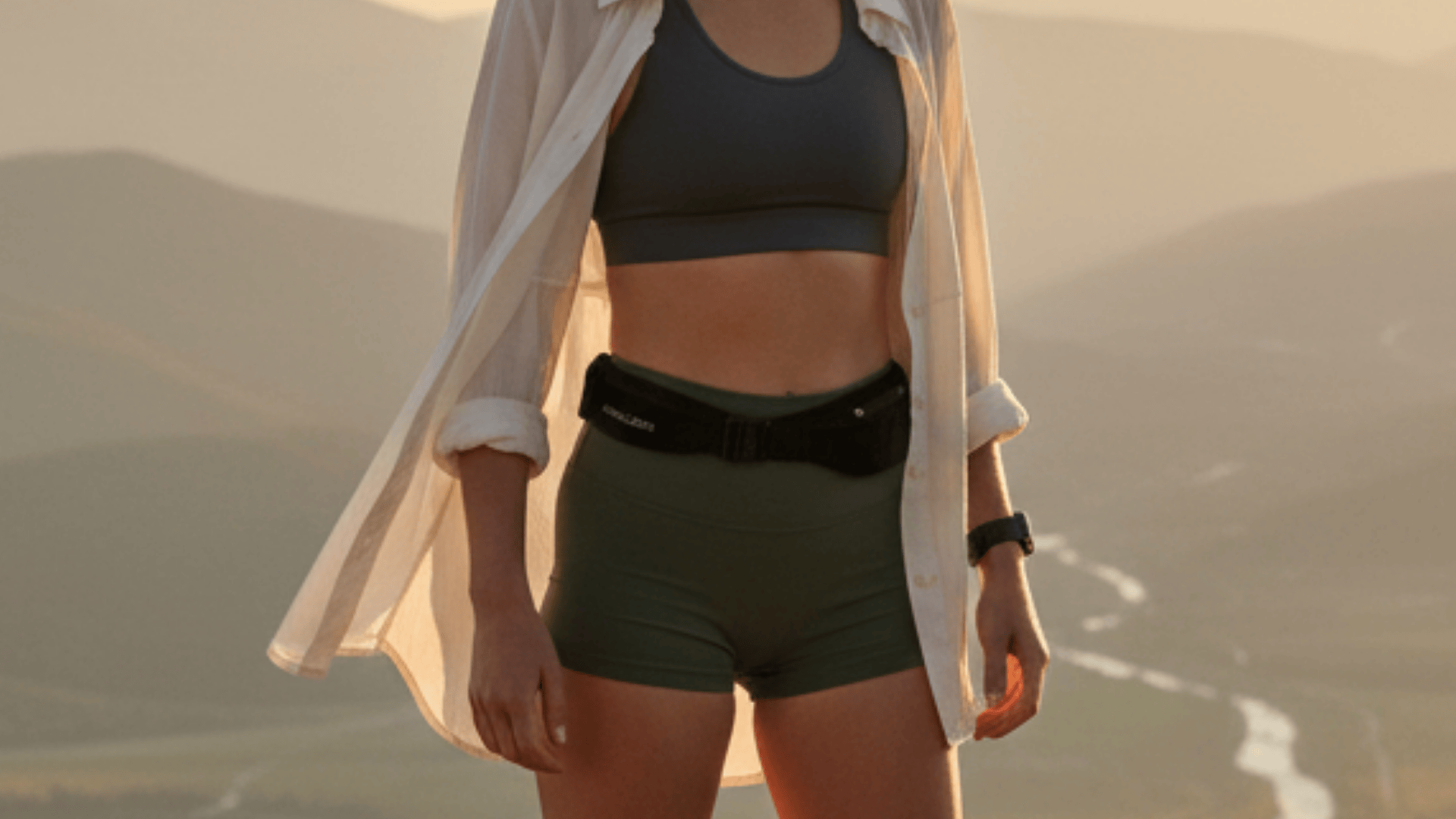
The right undergarments prevent chafing and keep you comfortable all day. Look for seamless construction, moisture-wicking fabrics, and designs that won’t ride up or shift.
Best picks:
- Budget:Hanes Sport Comfort Flex Fit Bra
- Premium:Icebreaker Sprite Racerback Bra
13. Wool Socks
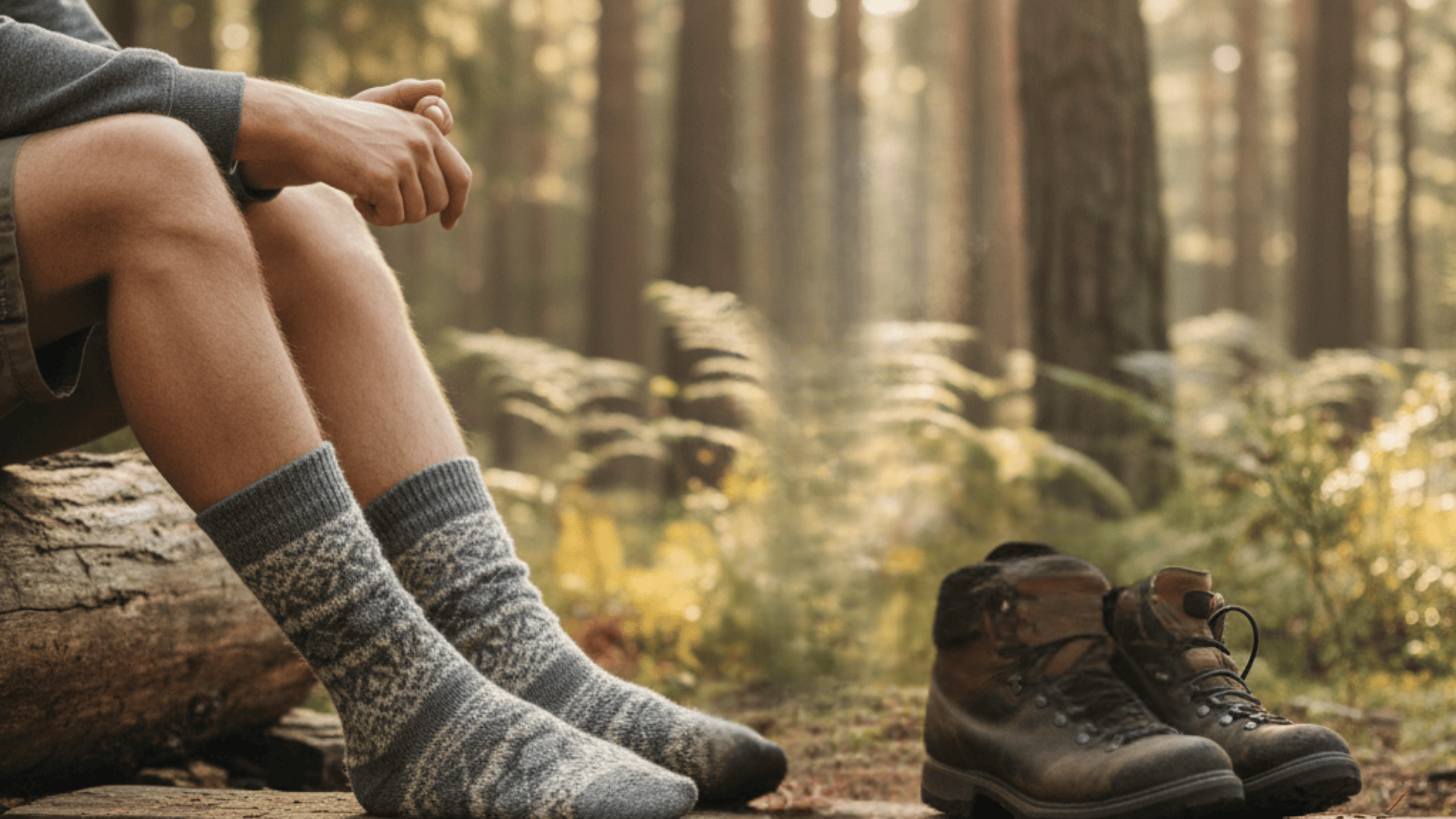
Quality socks prevent blisters and keep your feet comfortable mile after mile. Merino wool naturally resists odors and cushions pressure points without bunching in your shoes.
Best picks:
- Budget:REI Co-op Merino Lightweight Crew
- Premium:Darn Tough Hiker Micro Crew
14. Day Packs (15-28 Liters)
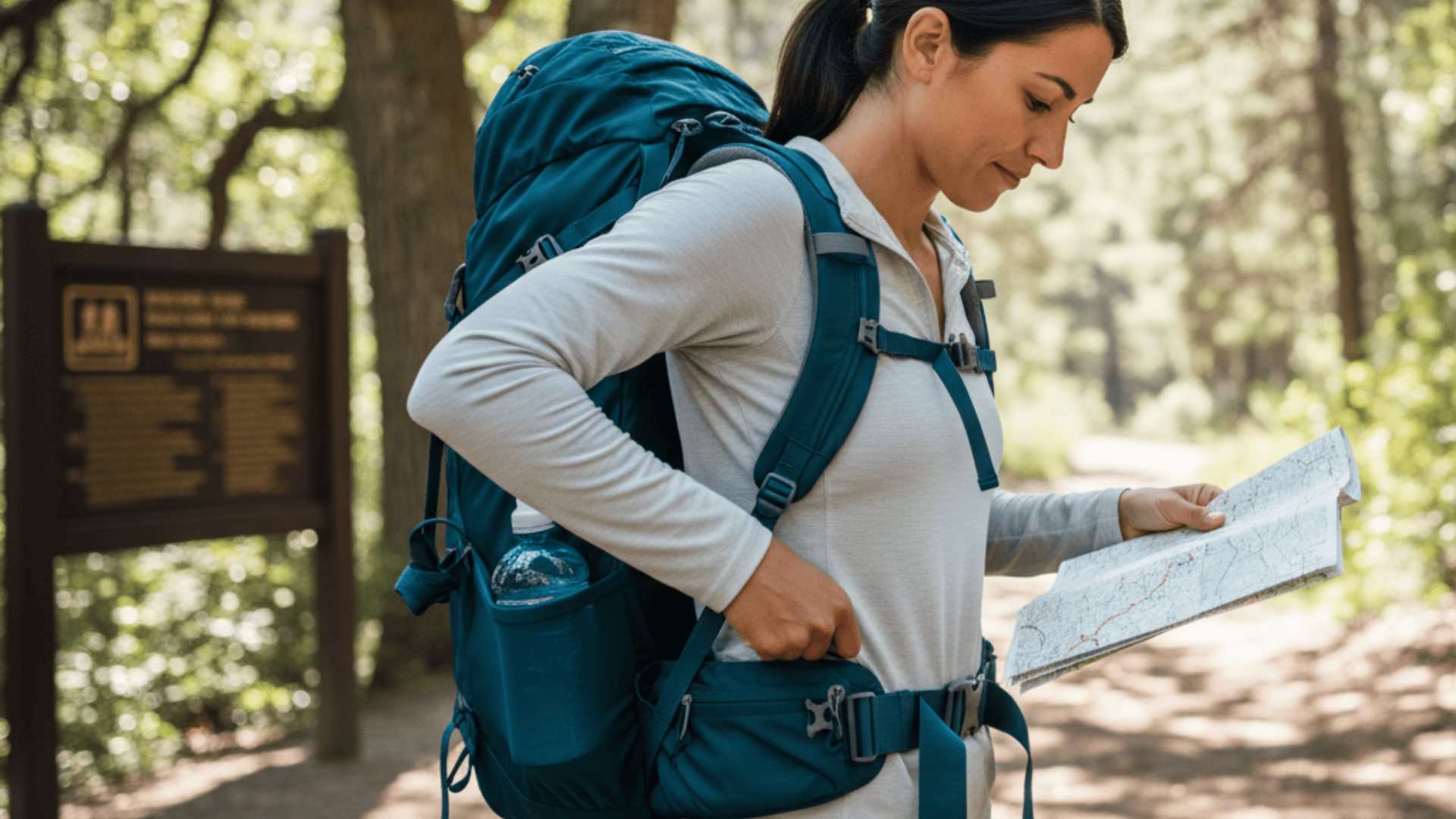
Your pack carries water, snacks, layers, and emergency gear for day hikes. Look for comfortable straps, hip belts for weight distribution, and easy-access pockets for essentials.
Best picks:
- Budget:REI Co-op Flash 22
- Premium:Osprey Tempest 24
15. Trekking Poles
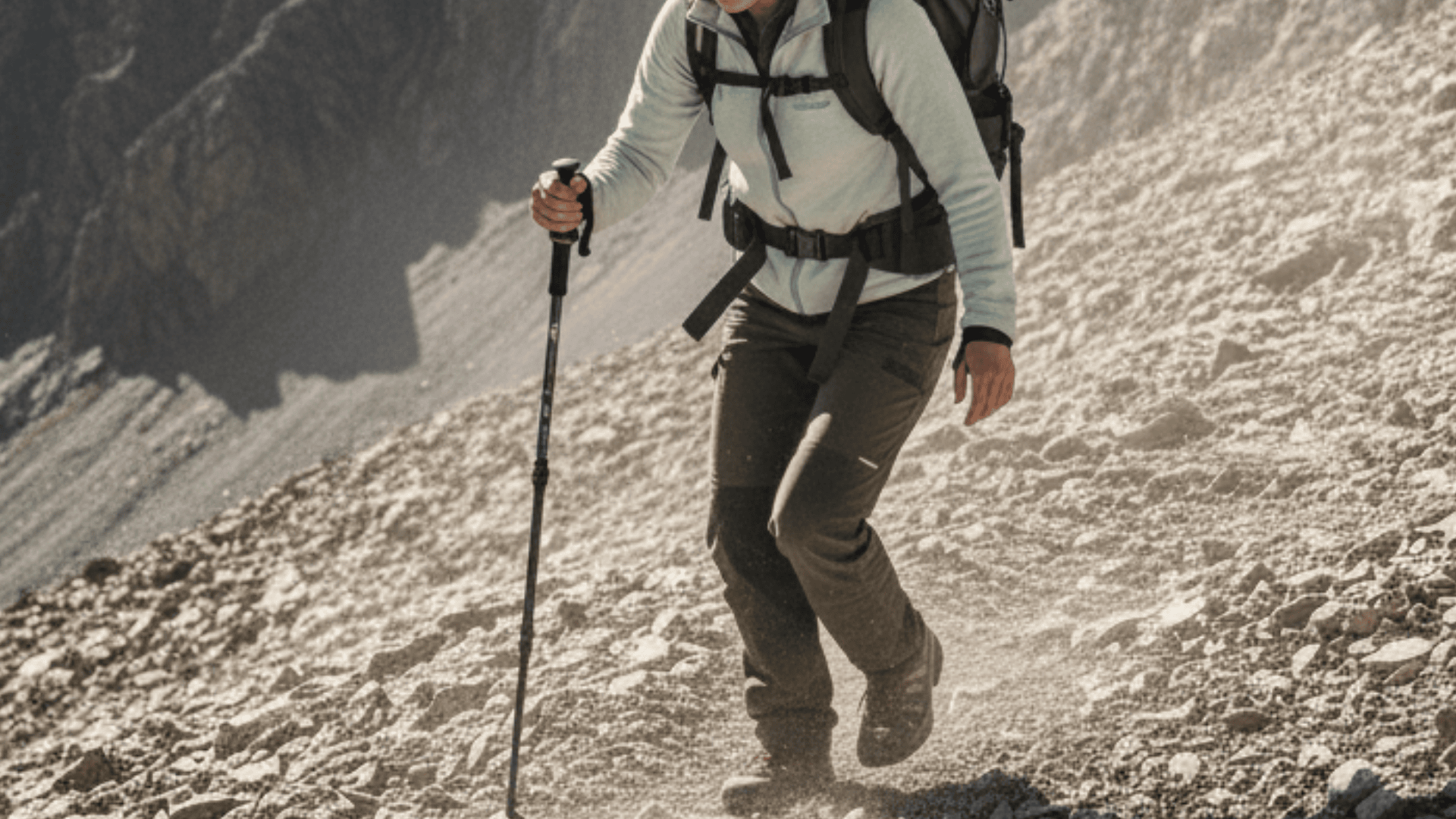
Poles reduce knee strain on descents and improve balance on uneven ground. They transfer weight to your arms and can help you test uncertain footing or cross streams.
Best picks:
- Budget:Cascade Mountain Tech Carbon Fiber Poles
- Premium:Black Diamond Distance Z
Cute Hiking Outfit Ideas
Need some style inspiration? These three complete looks prove you don’t have to sacrifice fashion for function on the trail.
1. City-to-Trail Neutral Look
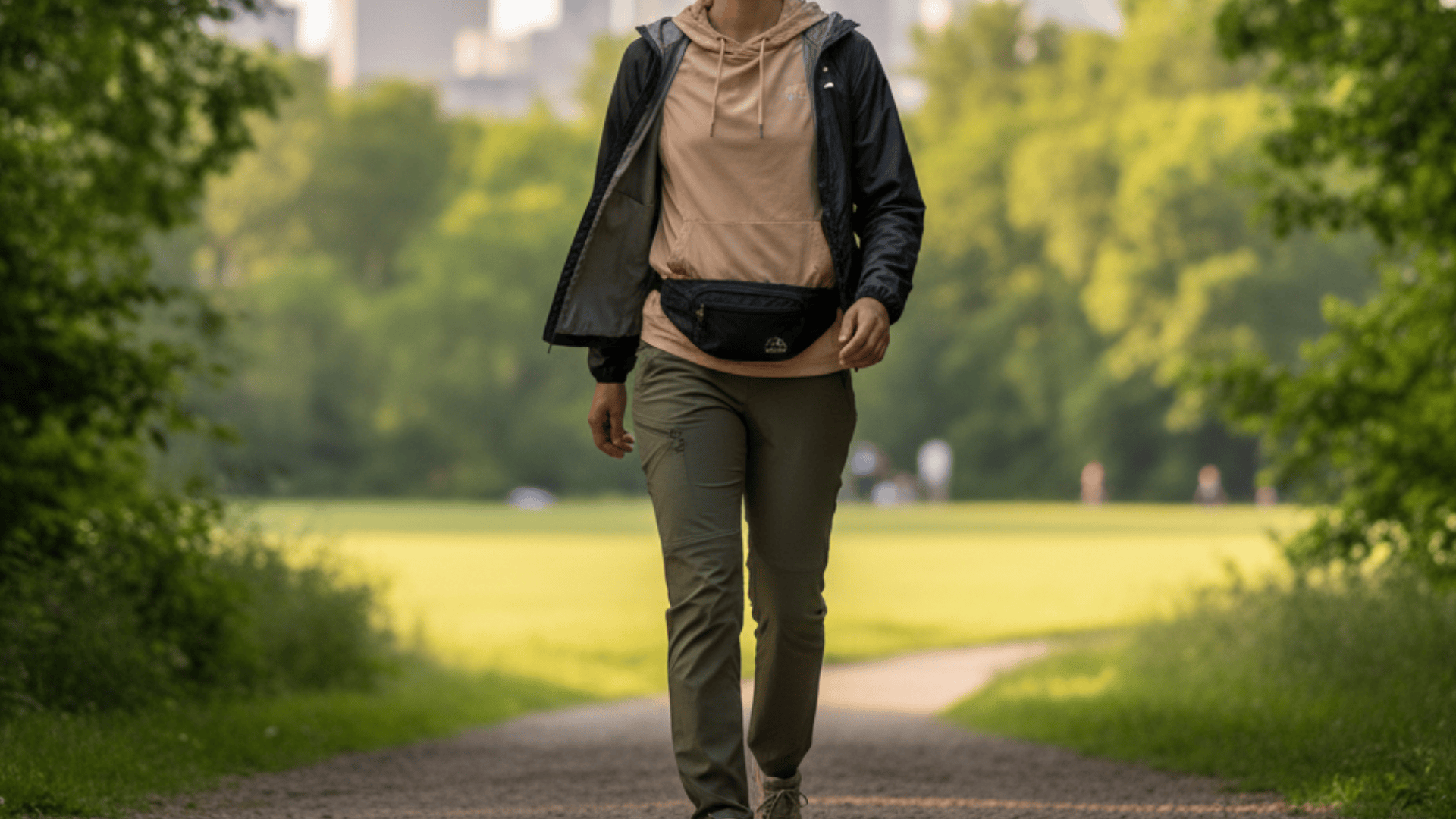
Perfect for when you want to blend urban style with outdoor performance. Start with a sand-colored sun hoodie paired with olive Ferrosi pants for a nature-inspired palette.
Complete the look with Terrex Free Hiker shoes, a black windbreaker, and a mini hip-belt pack that keeps essentials close without the bulk.
2. Monochrome Leggings Style
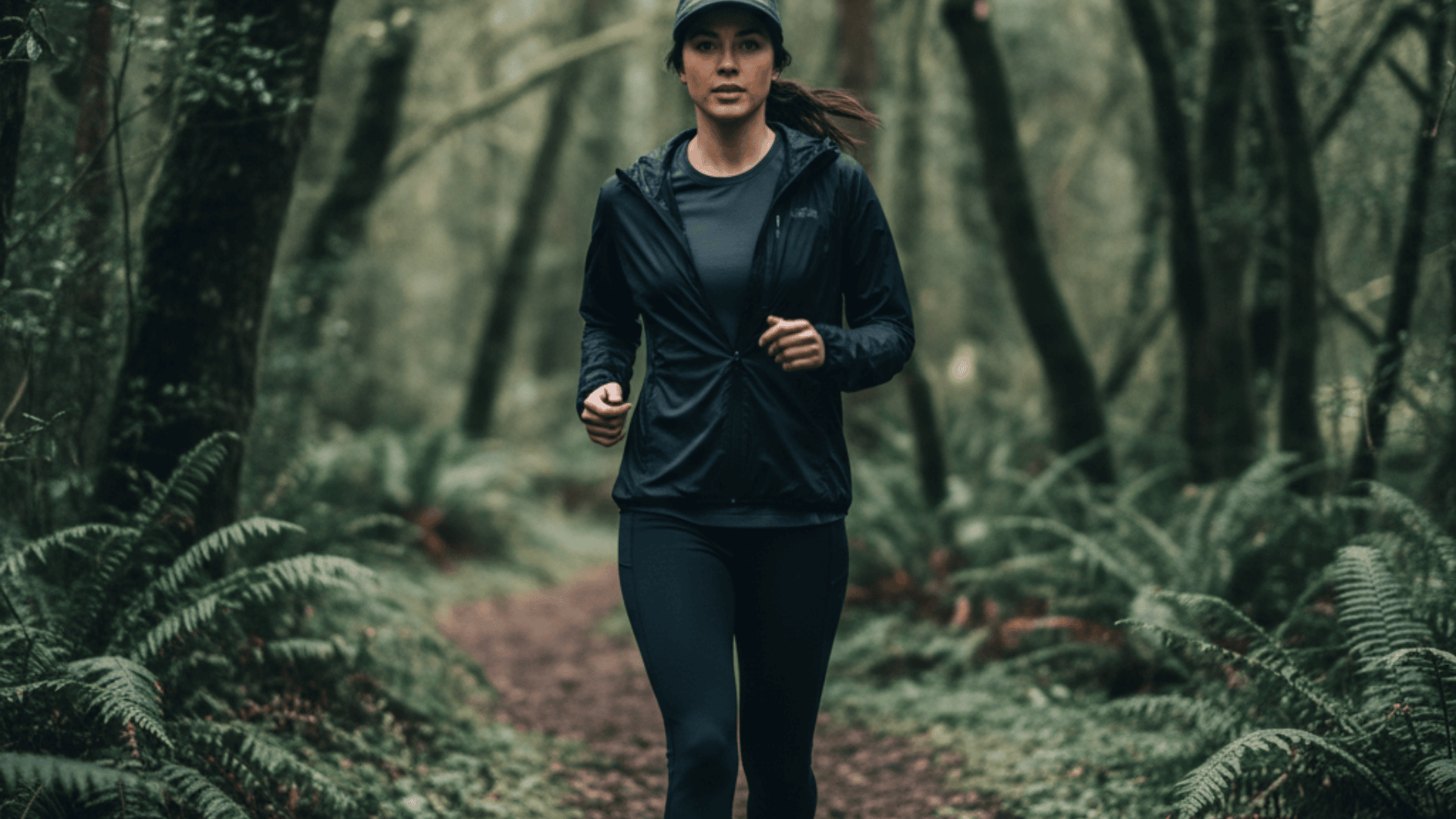
An all-black outfit looks sleek and athletic while staying practical. Layer a charcoal wicking tee under a Nano-Air jacket for temperature control.
Black trek tights, Moab Speed shoes, and a slate-colored cap create a streamlined silhouette that photographs beautifully and performs even better.
3. Desert Chic
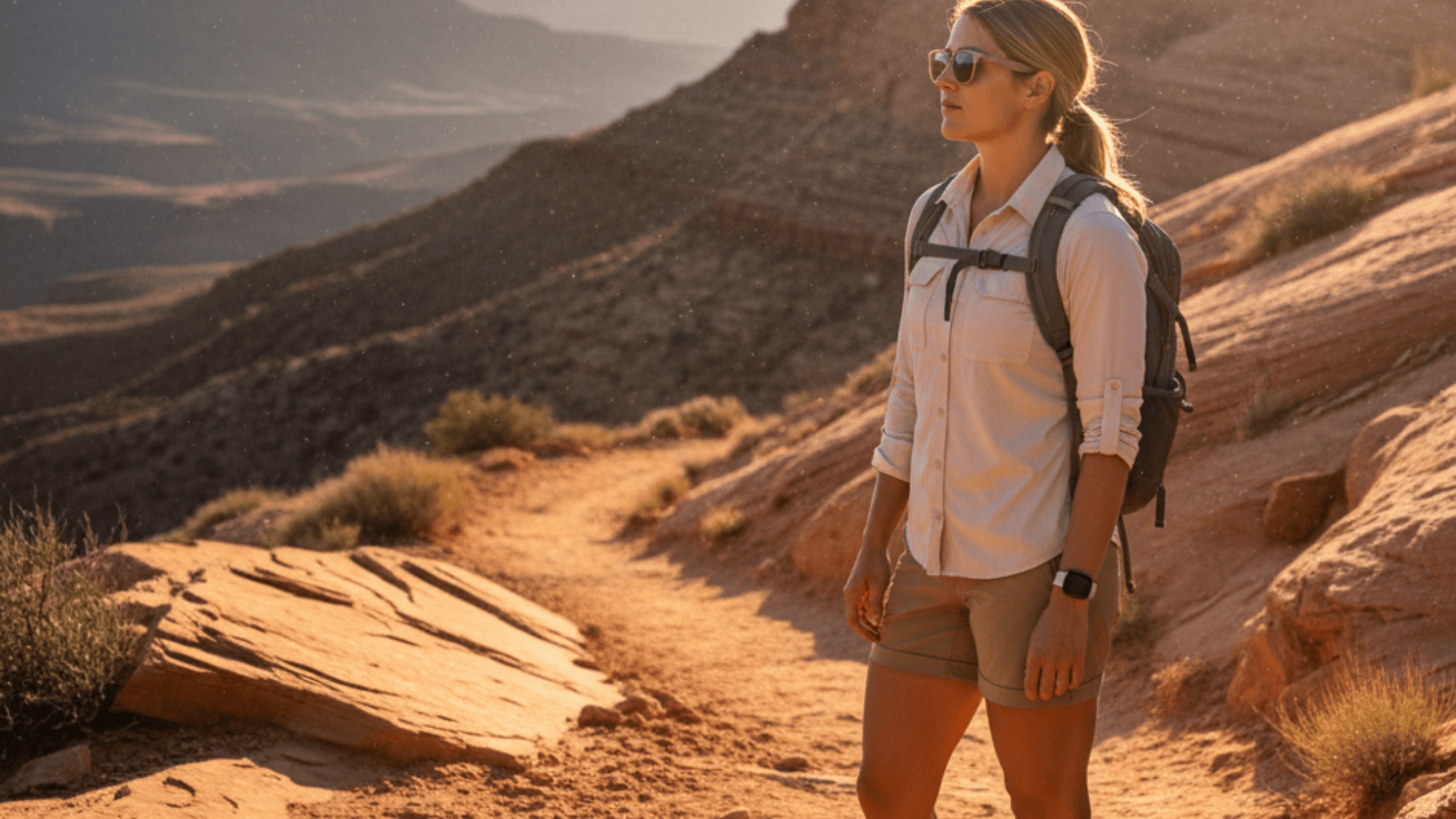
Light colors keep you cool and camera-ready in sunny, arid conditions. A light beige UPF shirt and tan nylon shorts offer sun protection without overheating.
Danner 2650 shoes in earth tones and stone-colored sunglasses pull together a cohesive look that’s Instagram-worthy and trail-tested.
Adapting Your Outfit to Weather and Conditions
The same trail feels completely different in July versus January. Smart hikers adjust their gear based on when and where they’re hiking.
1. What to Wear by Season
Each season demands a different approach to layering and protection.
- Warm Weather – Sun hoodie, shorts or airy pants, windbreaker, ventilated shoes.
- Spring and Fall – Merino long-sleeve, grid fleece, wind/rain shell, softshell pants.
- Cold Weather – Thermal base layers, insulated mid layer, hardshell jacket, insulated pants or fleece leggings, warm boots, beanie, gloves.
2. Dressing for Specific Trail Conditions
Beyond temperature, certain environments require specialized gear adjustments.
- Hot and Humid/Rainy – Ultralight polyester or thin merino, vented pants, rain shell with pit zips, dry bags, anti-chafe balm.
- Cold and Wet – 3-layer shell, synthetic puffy, rain pants, waterproof boots with gaiters, extra socks.
- Windy or Exposed – Ultralight windbreaker, eye protection, ear band or buff.
- High Altitude/Strong Sun – UPF 30-50+ clothing, wide-brimmed hat, sun gloves, mineral sunscreen.
- Bug-Heavy Areas – Permethrin-treated long sleeves and pants, light colors, head net, DEET or picaridin spray.
Understanding Hiking Fabrics
The fabric matters just as much as the gear itself: here’s what works best on the trail.
| Fabric Type | Key Features | Best Uses |
|---|---|---|
| Merino Wool (150-250 gsm) | Warm when wet, odor-resistant, comfortable | Base layers and socks |
| Technical Polyester | Dries super fast | Hot, humid conditions and base layers |
| Nylon | Tough, quick-drying | Pants, windbreakers, and shells |
| Active Insulation | Keeps you warm while letting heat escape | Wear while moving |
| Grid/Micro Fleece | Reliable mid-layer | Pair with a shell for wind protection |
| Waterproof-Breathable (2.5-3L) | More layers = more waterproof but heavier | Rain jacket fabrics |
Note: Skip cotton and denim on the trail, they soak up water, stay wet, and make you cold or uncomfortable.
Your Hiking Outfit Checklist
Before you head out, make sure you have: a sweat-wicking base layer, a warm mid layer, an insulated jacket, pants or leggings with pockets, merino or synthetic socks, proper hiking footwear, a hat, sunglasses, a rain jacket or windbreaker, a backpack with water and snacks, and basic first aid.
You don’t need to buy everything at once. Start with the basics and add pieces as you hike more. The most important thing is getting outside and having fun.
What’s your favorite piece of hiking gear? Drop a comment below and let us know what you can’t hit the trail without. See you out there!







